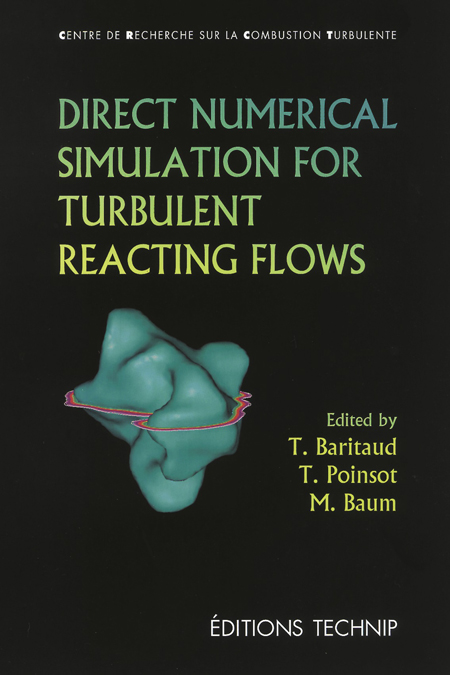Direct Numerical Simulation for Turbulent Reacting Flows
Auteurs : BARITAUD Thierry , BAUM Markus , POINSOT Thierry
ISBN : 9782710806981
relié 160 x 240 mm 318 pages
Date de publication : 1996
Acheteurs américains

 Ajouter au panier 102 €
Ajouter au panier 102 €
Direct numerical simulation for turbulent reacting flow sis now a standard tool (with experiments, theory and modelling) in the analysis of turbulent combustion. Its impact on turbulent combustion models has been quite significant: DNS brings considerable information and generates new ideas and new models. This book sums up recent DNS work and presents multiple examples of DNS work to provide a comprehensive picture of DNS of reacting flows. They include studies of laminar and turbulent combustion for premixed and diffusion flames with simple or complex chemistry. Ignition, turbulent flame propagation, flame-vortex interaction, flame-wall interaction problems are studied. The development of DNS tools is also described.
Table des matières :
Description of accurate boundary conditions for the simulation of reactive flows. Parallel direct numerical simulation of turbulent reactive flow. Flame-wall interaction and heat flux modelling in turbulent channel flow. A numerical study of laminar flame wall interaction with detailed chemistry: wall temperature effects. Modeling and simulation of turbulent flame kernel evolution. Experimental and theoretical analysis of flame surface density modelling for premixed turbulent combustion. Gradient and counter-gradient transport in turbulent premixed flames. Direct numerical simulation of turbulent flames with complex chemical kinetics. Effects of curvature and unsteadiness in diffusion flames. Implications for turbulent diffusion combustion. Numerical simulations of autoignition in turbulent mixing flows. Stabilization processes of diffusion flames. References.

 Partager
Partager
 Tweeter
Tweeter
